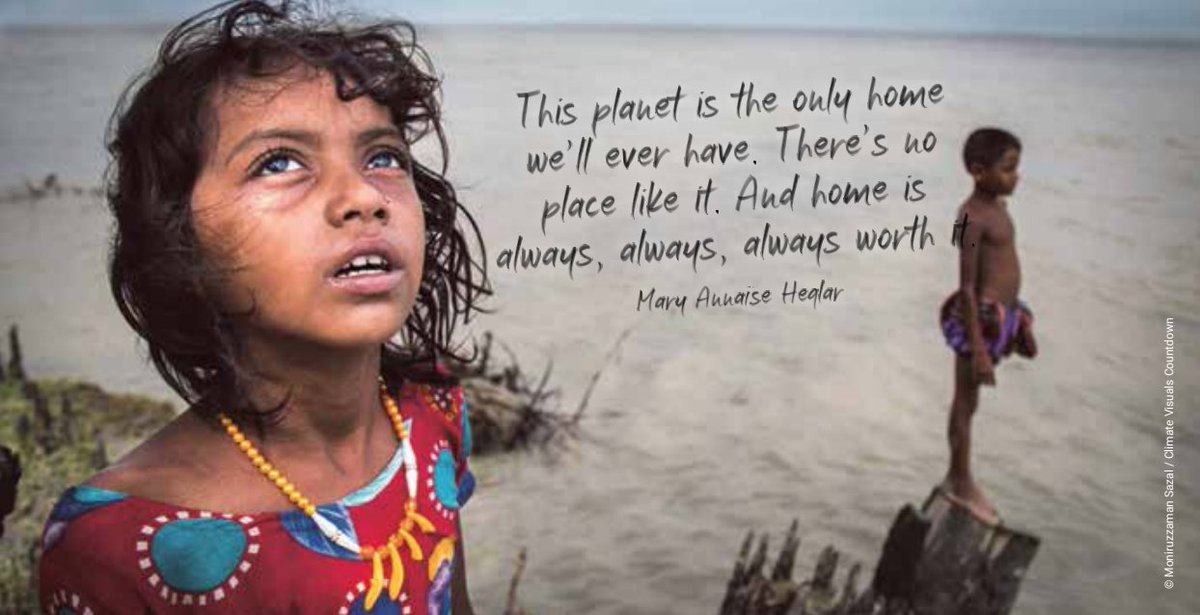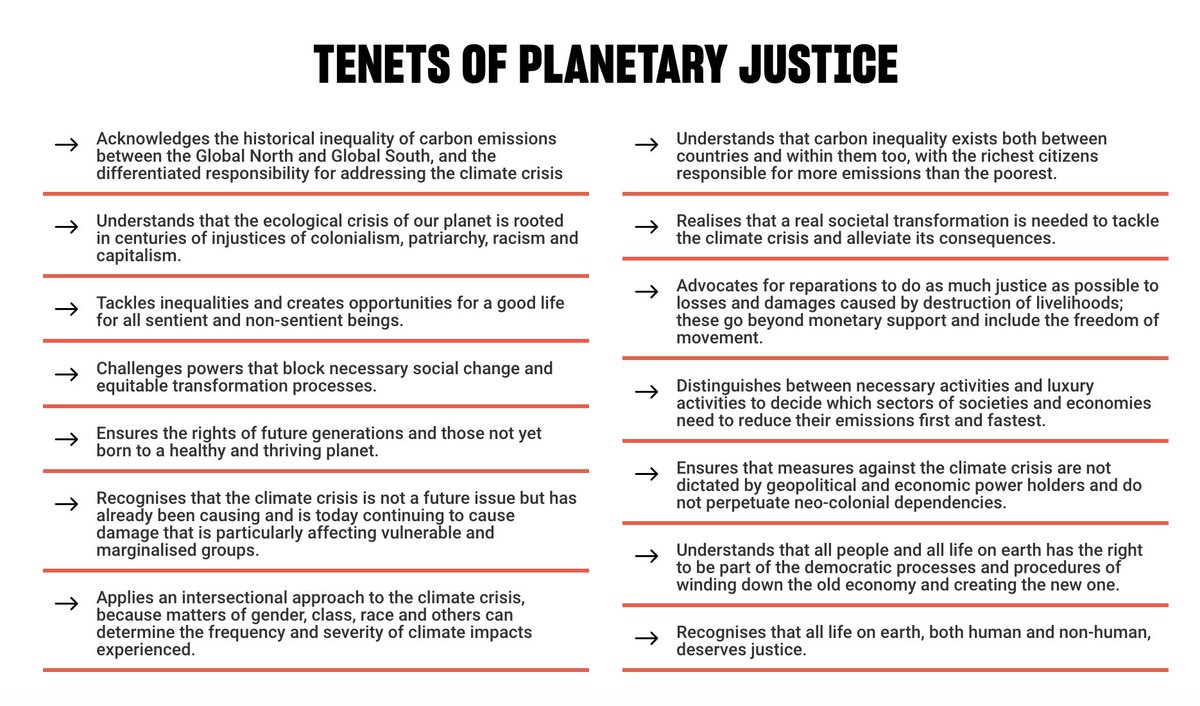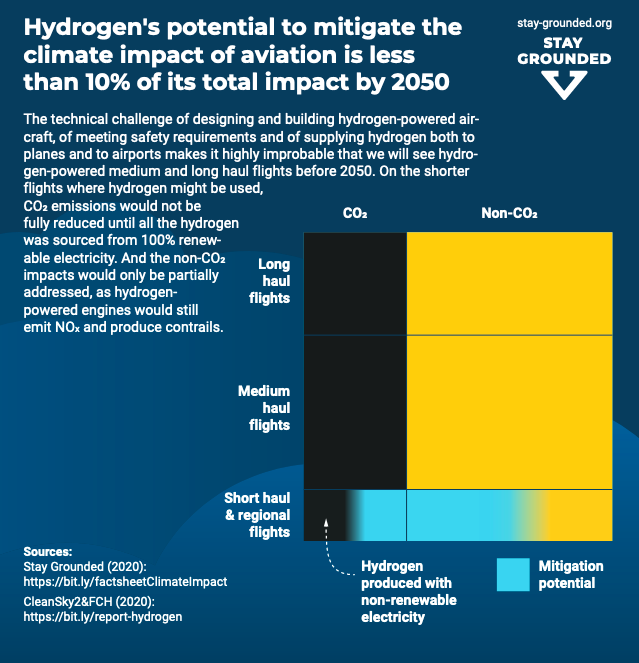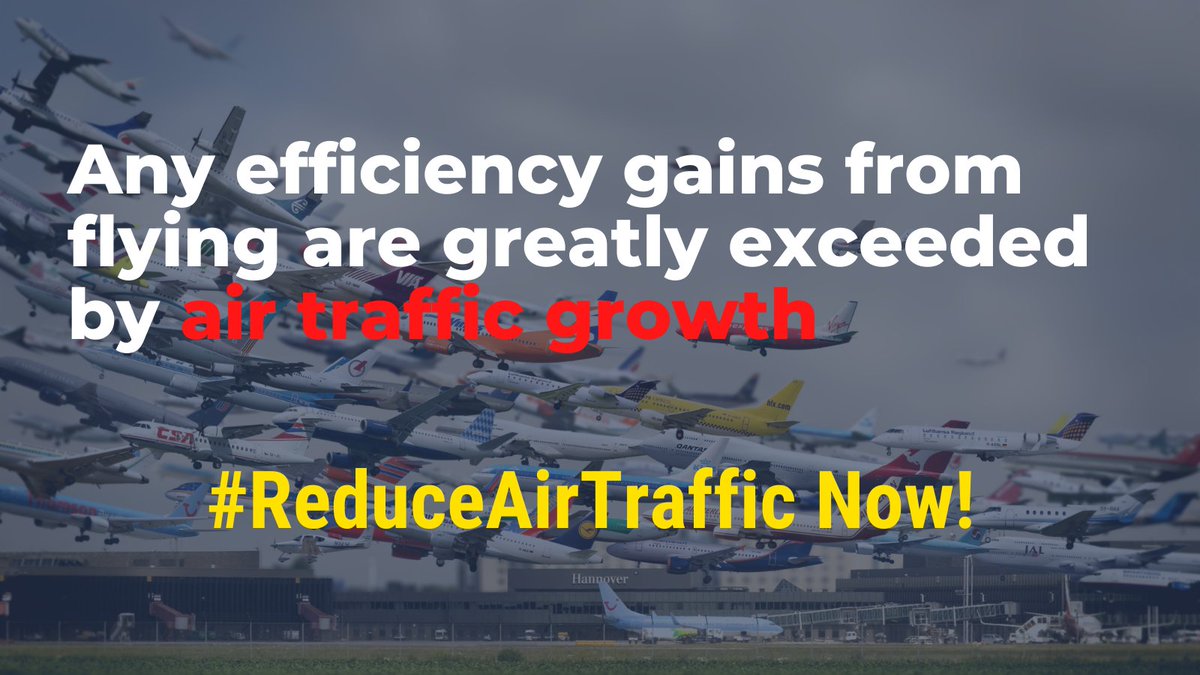
Reducing aviation is a matter of #ClimateJustice! 🌍⚖️
What are the injustices fuelled by our fossil-based mobility and economic system – and what does climate justice mean in this context?
A thread 🔽
1/🧵
What are the injustices fuelled by our fossil-based mobility and economic system – and what does climate justice mean in this context?
A thread 🔽
1/🧵

The enormous global injustice of the climate crisis:
The countries of the Global North are responsible for 92% of climate-damaging emissions beyond the safe planetary limit of 350 ppm CO2. The Global South is responsible for just 8%, as a 2020 study by @jasonhickel has shown.
2/
The countries of the Global North are responsible for 92% of climate-damaging emissions beyond the safe planetary limit of 350 ppm CO2. The Global South is responsible for just 8%, as a 2020 study by @jasonhickel has shown.
2/

#ClimateInjustice means (amongst other things) that communities that have contributed least to the climate crisis are already suffering most from its consequences. But #ClimateJustice must be much more than sharing efforts to reduce emissions and financing adaptation.
3/
3/
Between 1990 and 2015, the richest 1% of the world’s population alone was responsible for 15% of emissions (much from ✈️), twice as many emissions as the poorest half (!) of the world’s population, according to @Oxfam.
4/
4/

Between 1990 and 2015, the richest 10% of EU citizens were responsible for 27% of the EU’s emissions – equal to all emissions from the poorest half of Europeans combined. While poorer EU residents reduced their emissions, the richtest polluted more!
oxfam.org/en/press-relea…
5/
oxfam.org/en/press-relea…
5/
While around the world poorer people's emissions are associated with essential needs such as food and heating, the excess emissions of the richest come from wasteful consumption such as big cars and flights. 🚗✈️
6/
6/
The richest 1% of EU citizens cause 22.6t CO2 equivalent – with flying alone! That‘s 10x (!) the sustainable emissions footprint!
Also the richest 10% cause way more flight emissions than possible for staying within 1.5 degrees. The poorest hardly fly at all, also in Europe.
7/
Also the richest 10% cause way more flight emissions than possible for staying within 1.5 degrees. The poorest hardly fly at all, also in Europe.
7/

Climate injustice: more than a divide between rich & poor!
Women, People of Colour, indigenous peoples, economically deprived communities and those on the frontlines of fossil fuel extraction and climate colonialism are most affected. This is true in several ways…
8/
Women, People of Colour, indigenous peoples, economically deprived communities and those on the frontlines of fossil fuel extraction and climate colonialism are most affected. This is true in several ways…
8/
1) They are more often excluded from the benefits that come from burning oil, coal and gas and suffer more from the side effects of fossil fuel exploitation, while wealthy men fly and drive cars the most. It's also mostly men who run oil companies and rake in their profits.
9/
9/
2) The groups mentioned above suffer most from the harmful effects of the fossil fuel system. Economically deprived communities and People of Colour are more likely to live next to refineries, polluting airports or busy roads…
10/
10/
Indigenous lands often become "sacrifice zones", areas destroyed for the extraction and processing of fossil resources – as dwellings of poorer people and marginalised groups are sacrificed for the construction and expansion of airports.
11/
11/
3) They are more affected by the long-term consequences of global heating, such as water shortages or crop failures. Marginalised people often do not have the means and financial resources to adapt to the increasingly hostile environmental conditions.
12/
12/
4) The climate crisis is an amplifier of existing inequalities, problems and conflicts. Where conflicts ignite over resources and water, the living conditions deteriorate most dramatically for vulnerable groups and communities.
13/
13/
5) Marginalised people suffer most from impacts of false solutions to the climate crisis. E.g. when indigenous communities are driven off their lands for offset projects or when poor communities' livelihoods are threatened due to land grabs for #agrofuel production.
14/
14/
There is no way around this: #ClimateJustice must lead to a transformation of how we live together on this planet, how we make decisions, work, produce, consume, and how we understand our relationship to the natural world. Climate justice must be both global and local.
15/
15/
#ClimateJustice requires #reparations – as "a systemic approach to redistributing resources and changing policies and institutions that have perpetuated harm," as @OlufemiOTaiwo & Beba Cibralic explain.
foreignpolicy.com/2020/10/10/cas…
16/
foreignpolicy.com/2020/10/10/cas…
16/
Necessary steps to tackle the climate crisis and adapt to it should not be imposed from above. Genuinely inclusive and democratic processes are needed. disadvantaged groups must be at the heart of processes in order to remedy historical power imbalances and discriminations.
17/
17/
The goal of all this must be #PlanetaryJustice: everyone and everything on our planet must have the opportunity to live a good life!
sciencedirect.com/science/articl…
18/
sciencedirect.com/science/articl…
18/
Read more about our perspectives on climate justice - and find much more about the climate crisis, aviation's role in it and resources for climate communication in our new #CommonDestination guide:
reframeaviation.stay-grounded.org/chapter-2/#a-m…
#ReframeAviation
20/
reframeaviation.stay-grounded.org/chapter-2/#a-m…
#ReframeAviation
20/

What are the best ways to frame #climatejustice?
Very interesting insights and useful suggestions can be found in the project "Framing Climate Justice" by @pircuk, @350 and @NEON_UK.
An important resource for all climate activists and campaigners: framingclimatejustice.org
21/end
Very interesting insights and useful suggestions can be found in the project "Framing Climate Justice" by @pircuk, @350 and @NEON_UK.
An important resource for all climate activists and campaigners: framingclimatejustice.org
21/end
• • •
Missing some Tweet in this thread? You can try to
force a refresh


















